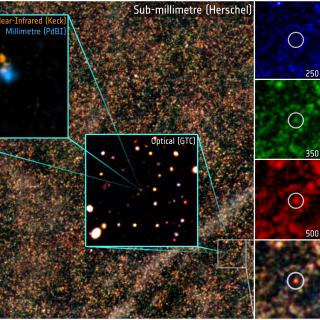Bibcode
Poidevin, F.; Omand, C. M. B.; Pérez-Fournon, I.; Clavero, R.; Shirley, R.; Marques-Chaves, R.; Jimenez Angel, C.; Geier, S.
Referencia bibliográfica
Monthly Notices of the Royal Astronomical Society
Fecha de publicación:
4
2022
Número de citas
10
Número de citas referidas
10
Descripción
Optical imaging polarimetry was conducted on the hydrogen poor superluminous supernova 2020znr during three phases after maximum light (≍ +34 d, +288 d, and +289 d). After instrumental and interstellar polarization correction, all measurements are consistent with null-polarization detection. Modelling the light curve with a magnetar spin-down model shows that SN2020znr has similar magnetar and ejecta parameters to other SLSNe. A comparison of the best-fitting values discussed in the literature on SN 2017egm and SN 2015bn, two hydrogen poor SLSNe showing an increase of polarization after maximum light, suggests that SN 2020znr has higher mass ejecta that may prevent access to the geometry of the inner ejecta with optical polarimetry. The combined information provided by spectroscopy and light-curve analysis of type I SLSNe may be an interesting avenue to categorize the polarization properties of this class of transients. This approach would require to expand the sample of SLSNe polarimetry data currently available with early and late time epochs new measurements.
Proyectos relacionados

Formación y Evolución de Galaxias: Observaciones Infrarrojas y en otras Longitudes de Onda
Este grupo desarrolla varios proyectos extragalácticos en diferentes rangos del espectro electromagnético utilizando satélites y telescopios en tierra para estudiar la evolución cosmológica de las galaxias y el origen de la actividad nuclear en galaxias activas. En el aspecto instrumental, el grupo forma parte del consorcio internacional que ha
Ismael
Pérez Fournon